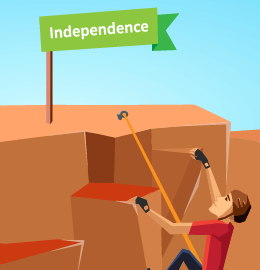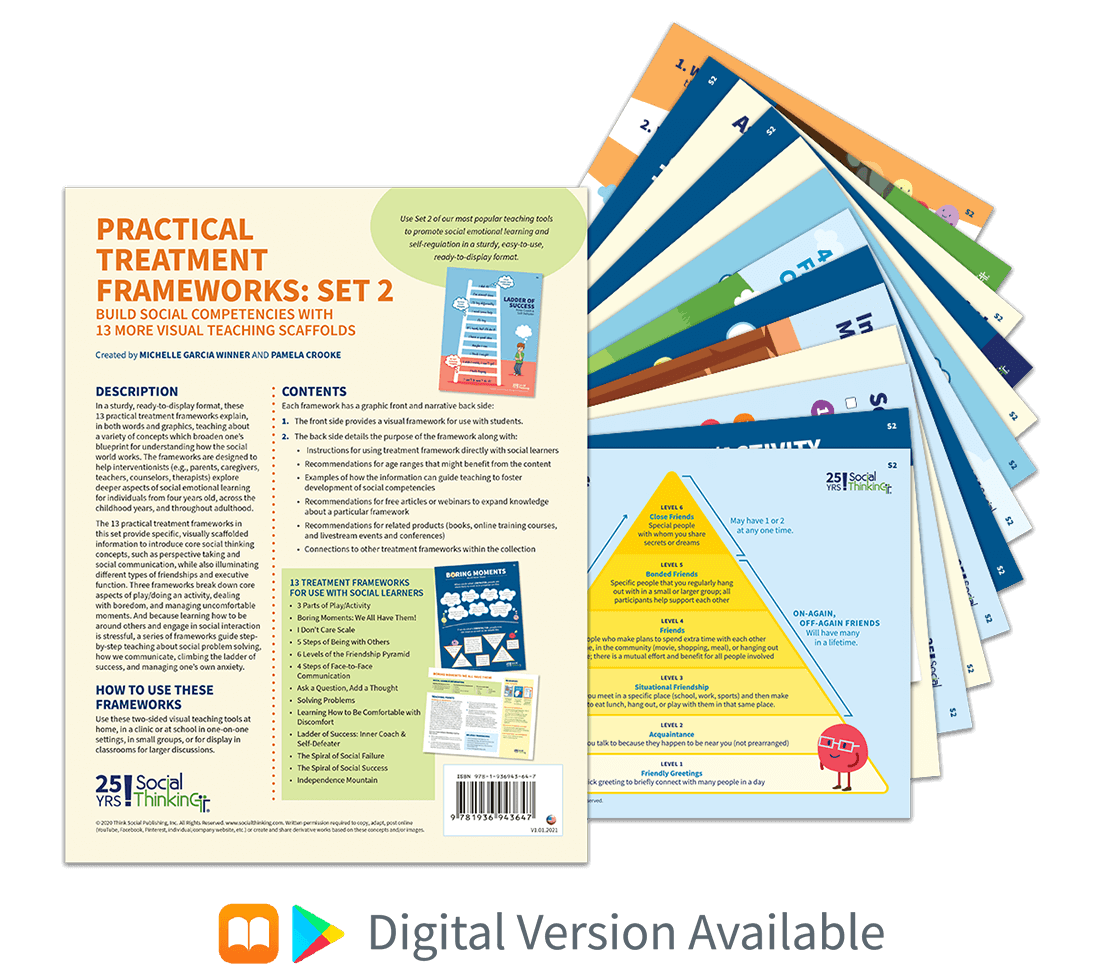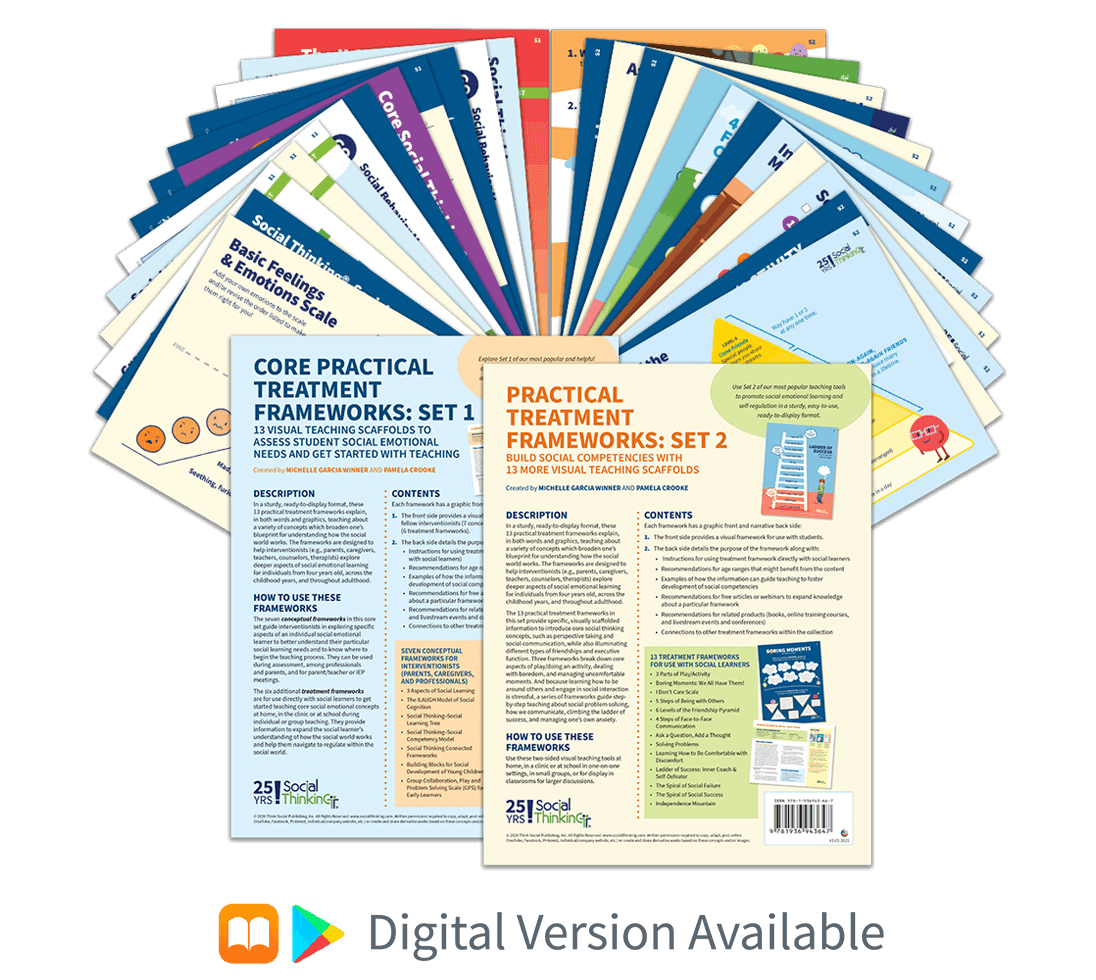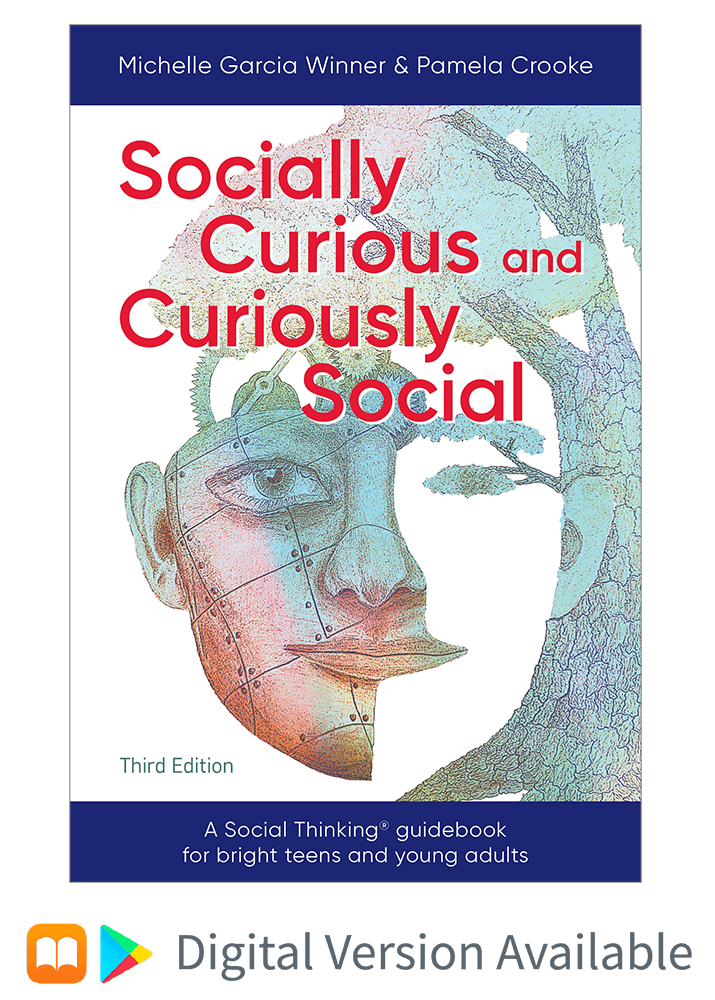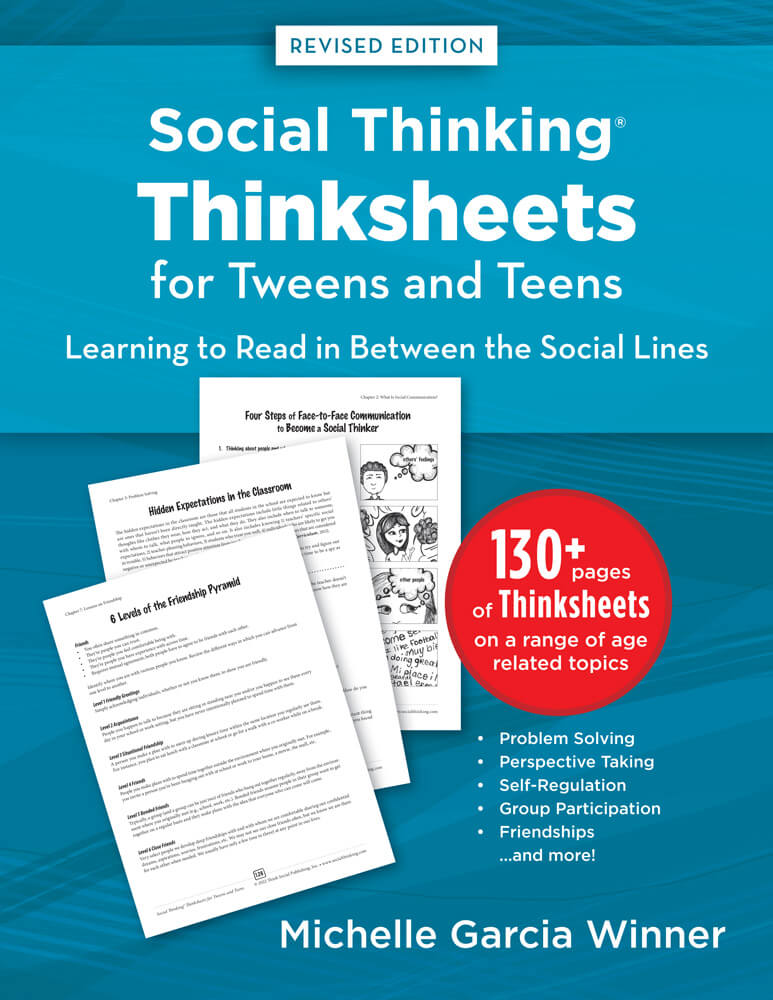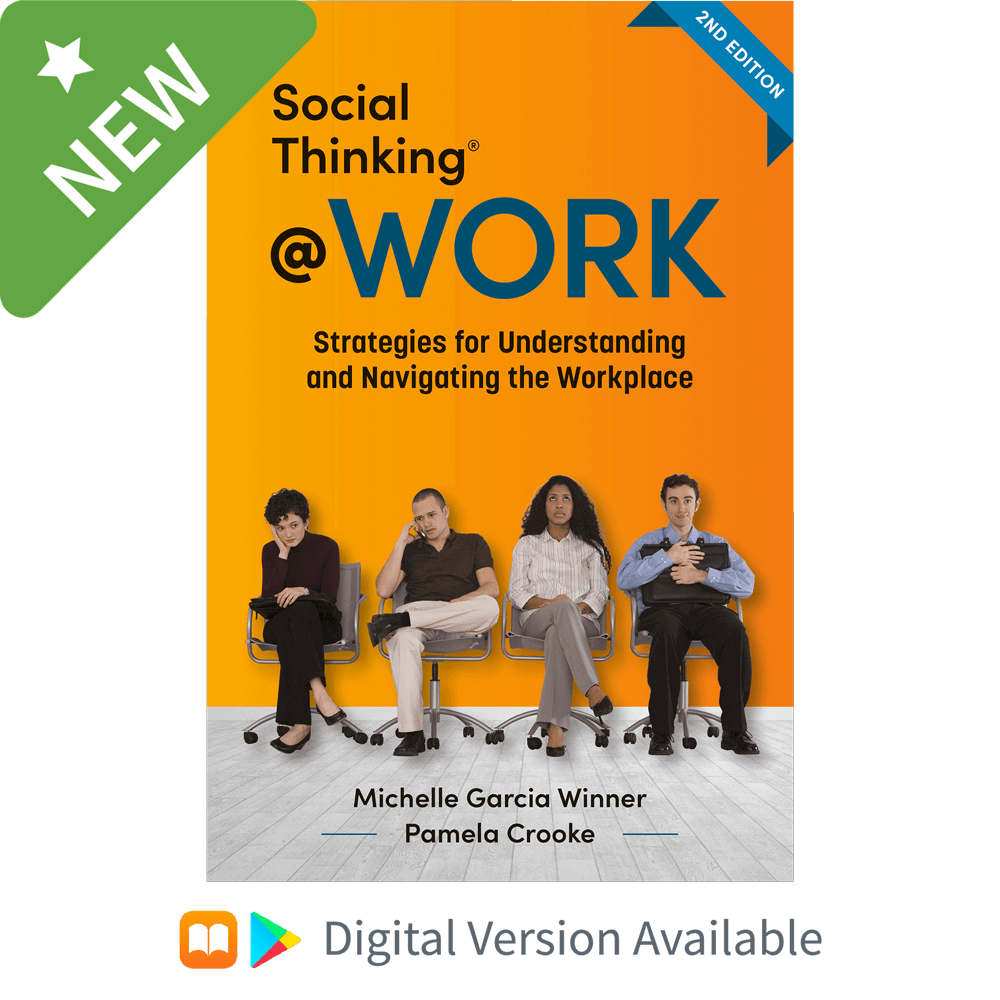Updated: May, 2022
© 2022 Think Social Publishing, Inc.
Download a graphic with the 10 levels to use with students
For many, living independently doesn’t just happen. It takes planning, practice, and patience. Our definition of living independently means moving throughout one’s daily routines without persistent prompts or cues from another person. It involves flexibly reacting and responding to daily demands. Note: This definition does not refer to those who rely on physical supports if differently abled in motor abilities. Independence in this case is inclusive of those supports.
Over the years, our work has led us to interact and consult with many young adults who are considered “academically smart,” but struggle to live independently as adults—whether in a university or work setting. Many have been given a diagnosis (ADHD, Twice Exceptional, or autism spectrum levels 1 and 2, etc.) at some time in their lives, and some have not. Almost all report challenges with Executive Functioning (EF) and have had a great deal of assistance in the form of prompts, cues, and reminders to accomplish the work required to finish high school. Many are also very talented in a defined area (e.g., violinist, scientist, inventor, etc.), and may have received large scholarships to attend the university of their choice based on their talents. While most make it through the first semester of higher education, a large percentage are unable to continue after that. Why? Our years of clinical experience have shown that intellect and academic abilities are not the problem. Rather, challenges with EF skills—the ability to sustain organization, focus, grit, and daily living practices—is the culprit.
Grades are only part of the equation
During the K-12 school years, most students are encouraged to focus on academic success as the most important indicator of accomplishment. And while many of our clients are described as smart and college bound, we rarely recognize and address their independence needs. Caregivers have pushed and prodded these individuals to wake up, get out of bed, go to sleep at a reasonable hour, eat and take medications on a regular schedule, manage homework time, study for tests, and turn in their papers right up to high school graduation.* This leaves the student with limited or no practice in these skills as well as a false sense (including for caregivers) that they are living an independent life. Then, as they move away to college, they are expected to efficiently function independently. Consider for a moment that the academic day during K-12 years is highly structured (i.e., start, stop, transition times are built in), but college life means some days will have no classes and others will be packed. This can be the wild west for many of our organizationally challenged students.
*Note: We understand that many neurotypically developing individuals also receive a great deal of reminders and support during high school. But this group is eventually able to transition into college life with only a few bumps along the way. This article is for those with social learning or EF differences and/or challenges who take longer, or possibly don’t acquire skills without specialized assistance to manage themselves across a wide array of daily demands.
Going solo takes practice
Because we’ve seen the challenges faced by young adults who are suddenly thrust into college life, where the expectation is independence and they have had no experience or practice, we have developed a visual strategy-based framework called the 10 Levels to Independence. This framework begins with the most critical areas (sleep, medication, food) and culminates with academic learning and leisure. Each level forms the foundation for subsequent levels—and every level is critical for independence. It is never too early or too late to target these critical areas sometimes referred to as “soft skills.”
Tip: Individuals can find a range of apps to help them with most of these levels—screens are for more than social media, gaming, and surfing! Learning to use the tools available through our devices can be an essential aspect of independent living.
10 Levels to Independence
1. Establish (mostly consistent) sleep and wake patterns
- Waking in the morning to get to classes, work, or other appointments, for most of us, is a learned skill and requires practice. When mastered, we learn self-responsibility and awareness to meeting the requirements of the day. While parents and caregivers may think “it’s no big deal” or “it’s just easier” to drag their child’s reluctant body out of bed every day, this is likely to backfire in the future. Keep in mind there is no one to do this once they leave home. For those who still live at home, it is a perfect opportunity to practice this forever life skill. We are always amazed to learn that many young adults who so heavily use their cell phones didn’t realize they had an alarm function. Never assume a student is aware of how to use their technology for functional use.
- Getting to bed is the bigger challenge: faced with the freedoms of living away from caregiver guidance, young adults often believe they can handle a sleep-free existence. We realize that many teens and young adults (those with EF and without EF challenges) struggle with going to bed at a reasonable time. Once emancipated, most students figure out within a couple of months how much sleep they need to manage the next day’s demands. However, students with social learning differences and/or challenges are not as aware of time management and how one day’s work and leisure time impacts the next day’s functioning. While it is expected that all teens/young adults will have bumps and bruises with learning to manage their sleep schedule, many find they feel lonely during the daylight hours with all the demands of face-to-face interaction and that their social life begins at midnight through the internet. There is no quick solution to this problem; rather, the longer-term solution begins with teaching awareness of time management, the concepts and skills for face-to-face communication, and the importance of sleep schedules. Helping teens transition well means providing them with a level of independence prior to them leaving home so that they have started to figure out these responsibilities before they are set free!
2. Take needed medications on schedule and without resistance
- Taking prescribed medications or supplements on a suggested schedule seems like a simple task, but if the individual only remembers when told (because they’ve always been told), then the routine will not continue when they are away from the prompt. We’ve worked with young adults who stay awake for 24 hours and then sleep nearly as long. This unpredictable sleep-wake schedule wreaks havoc on medication management as it throws brain chemistry off balance. Begin medication responsibility no later than high school and allow for at least four years of practice and for these routines to develop.
- If the young adult no longer feels they need medication, then they should be the one to talk directly to the doctor to discuss alternatives and possible ramifications. We find that parents hold on to medication management too long and then, if their child abruptly stops, the result is negative and/or can include possibly dangerous side effects. Keep in mind that once a child becomes a legal adult, their medical doctors are not allowed to talk to the caregiver without permission.
3. Establish and maintain reasonable nutritional intake
- One suggestion to support this step is to discuss the scientifically proven food-brain connection. While it is common for newly emancipated students to gravitate to junk food, they eventually find a need for some sort of reasonable nutritional intake. We have worked with individuals who were so anxious about eating around others in the school cafeteria that they were essentially living out of food machines on campus long-term. Learning strategies for face-to-face communication, including how to ask for help or directions, and how to initiate social interactions with people in a cafeteria or other campus eatery helps to promote improved nutrition.
4. Exercise and stay active
- With the significant increase in screen-based addiction, a larger proportion of young adults (and older adults) are failing to take care of their bodies. The reality is that many of our clients do not enjoy, nor crave, exercise (just like the rest of us). However, with wearable technology (phones, watches), the idea of walking as an exercise is no longer taboo. We’ve known several clients who have found step tracking to literally be a healthy “restricted interest.”
5. Monitor hygiene
- Here is the reality for all of us: people notice how we look and smell. If we appear or smell dirty, the negative impact includes, but is not limited to, struggles with interacting with roommates, meeting new people, being included in peer-based group work, etc. Some young adults may not have self-awareness that their hair looks dirty, so they assume others don’t notice. Others likely do notice, but often don’t tell the person directly. Sadly, people tend to gossip with others when a person presents with hygiene issues. Being honest with our students about this is okay and our clients report they really appreciate trusted people being (compassionately) honest with them as they struggle to read social cues or fluidly take the perspective of others. It is also helpful for them to build time into their schedule for hygiene once they are emancipated.
6. Establish face-to-face relationships (balance of online and face-to-face social relationships)
- Given the many points noted above, the challenges of face-to-face relationships can impact many different and seemingly disconnected aspects of functioning independently. Face-to-face interactions can be one of the best ways to ward off mental health challenges. Knowing how to establish and maintain different types of social relationships—such as asking for help, establishing acquaintance-based relationships, and managing a friendship—are all part of the adult living experience. A mix of face-to-face, online, and social media connections can be a protective factor against budding mental health challenges. The research is showing that individuals who spend a lot of time on screens to satisfy their need for social relationships are less satisfied with those relationships when compared to face-to-face relationships. This is the case for both neurotypicals and neurodivergent students.
- Many of our clients say, “I already know how to do all this social stuff. I’ll wait until college to try it out.” The reality is that it’s tough to just start being friendly to those you don’t know without practice. Talk to your students about building their social intelligence muscle in the same way that we talk about building science knowledge and physical strength. In summary, all relationships (online and face-to-face) are good—but it’s best to have a balance.
7. PLAN to get organized
- One component of the Social Thinking Methodology is to teach the difference between a goal and an action plan. A goal is something one thinks about, and an action plan is something one does. The key ingredient is to regulate one’s emotions to carry out the action plans to achieve our self-determined goals. An essential step in getting organized is taking the time to create a set of action plans to meet a specific goal. Knowing what needs to be done and when it should be done is a critical step prior to doing the work. Problems arise when a person creates plans and then doesn’t do anything to carry out the plans. While organized thinking is an essential part of the organizational process, it may lead some to “talk the talk” rather than “walk the walk”; for this reason, we separated level 7 from level 8 in this framework.
8. DO what you planned:
- This is called “walking the walk” and it begins after organizing one’s thinking (level 7). To carry out our plans requires motivation, grit, and managing our behaviors and emotions when we are less than thrilled with the task. A significant part of becoming self-reliant and independent is having strategies to follow through with doing things when the task makes us uncomfortable (e.g., long-term project, difficult math, meeting someone new, computer programming, etc.). Harnessing motivation and accomplishing action plans are essential to being a college student or employee.
- How can we teach students to create their own motivation to tackle less exciting schoolwork?, We teach students to be to learn to be comfortable with discomfort. We also teach awareness about falling into the pit of the “nowness of now.” The nowness of now rut occurs when students seek relief right now from anything that makes them feel uncomfortable. For example, when doing an assignment, going to a class, doing boring work, meeting people to work on a project, etc. Please refer to helpful strategies about tackling the “doing” part of projects (Sarah Ward and Kristen Jacobsen (www.efpractice.com). Also, www.CHADD.org provides a wealth of information about how to manage EF challenges for those with ADHD.
9. Learn new information
- Notice that this is level 9 and not the first step! However, most of our students think school and, ultimately, going away to college simply means academic learning. The ability to learn new information in higher education (or in the real world) means that you’ve figured out the first eight levels. If you aren’t sleeping, eating well, and generally taking care of yourself, then learning is negatively affected. If you are completely dependent on a parent/caregiver to set your goals and coach you through the action, then your chances of independence diminish greatly. Parents and professionals should work with younger students to see each of these levels to independence as equally important in one’s evolution.
10. Connecting leisure time to budgeting
- While childhood includes many hours of leisure time, adulthood requires finding a balance in this independence trifecta: 1) establish a work or career path, 2) seek and maintain relationships, and 3) pursue leisure activities simply for leisure. The tricky part is balance. If one’s leisure activities, for example, gaming, overtake work or homework/studying, then one may not be considered capable of living independently.
- Without a job, and even sometimes with one, money management challenges can grind the independence wheel to a halt. Parents/caregivers and schools should begin teaching how to make a simple budget and stick to it starting in middle school (even if the adults struggle with budgeting themselves). There are numerous apps, bank resources, and simple courses that have made the process more streamlined. Unfortunately, most high schools in the U.S. have phased out practical math and related life skills of managing checking accounts, etc. in lieu of spending more time on educational standards–based information. Many of our students end up with big scholarships, poor money management, limited spending oversight, and eventually unplanned debt.
- On the other hand, if work (or leisure) outweighs time spent seeking relationships, then the outcome may be loneliness, depression, and anxiety. In fact, our definition of success in high school is to graduate with one’s mental health intact. We can all support this by avoiding a singular focus on getting good grades over managing one’s anxiety and depression. Having solid to strong mental health allows for more flexible thinking and problem solving. Keep in mind that treating one’s mental health may also include teaching social learning and related social skills along with in EF skills for managing oneself and one’s resources (organizational skills, self-regulation of emotion, etc.).
So, why not talk about independence starting in upper elementary and middle school. Give students the chance to practice and practice and struggle and practice some more to have the best chance of living independently. Tackling these 10 levels early and often will help prepare them to succeed in the transition to adulthood on whichever route—university or work life—is traveled. Having the foundational tools for living independently is a recipe for well-being in later life. Let’s all do our part to support the journey.









